Photo credits: The University of Wyoming’s American Heritage Center
A historic group called the Wyoming Black Fourteen were the African American members of the 1969 University of Wyoming (UW) football team.
They protested playing a game with Brigham Young University (BYU) because of the Church of Jesus Christ of Latter-day Saints’s ban on black men holding the priesthood in the church, and other racial restrictions. The priesthood ban applied exclusively to men of African descent.
The fourteen players were Jerry Berry, Tony Gibson, John Griffin, Lionel Grimes, Mel Hamilton, Ron Hill, Willie Hysaw, Jim Isaac, Earl Lee, Don Meadows, Tony McGee, Ivie Moore, Joe Williams, and Ted Williams. They were part of a successful Wyoming football team. Under Head Coach Lloyd Eaton, the Wyoming Cowboys had won three consecutive Western Athletic Conference (WAC) championships, and in 1969 it was considered the best football team to ever play for the university.
The protest began on October 15, 1969, when Willie Black (a 32-year-old math graduate student and head of Wyoming’s Black Student Alliance) learned of the LDS ban on black male priests. As a result, Black brought a letter titled “We Must Protest,” to university administrators. The letter described the discriminatory issues within the Mormon church. These issues included its race-based priesthood restriction, as well as other prohibitions, such as a rule, which barred all women and men of African ancestry from participating in temple rituals.
Black’s letter called for all Wyoming football players and students to protest LDS church policies during the scheduled game with BYU, which was scheduled to commence three days later on October 18, 1969.
Two days before the game, the fourteen black players walked to the athletic complex to discuss options for how they might protest. They eventually decided to wear black armbands but nonetheless compete in the game. On October 17, the day before the game, Coach Eaton ordered the players to the bleachers where he reprimanded them and then released them from the team, revoking their athletic scholarships.
The university announced that the Board of Trustees supported Coach Eaton’s decision and said “the players will not play in today’s game or any [other] during the balance of the season.” Having dismissed all the black players, the Cowboys became an all-white team. They went on to beat BYU, 40-7; they won two more games but lost four of the remaining games in the season.
The dismissal of the fourteen players brought swift, unwanted local and national attention to the University of Wyoming. First, the UW Student Senate passed a resolution, which said in part, “The actions of coach Eaton and the Board of Trustees were not only uncompromising, but unjust and totally wrong.” By the end of October, the UW College of Arts and Sciences, (the largest college on campus) voted to support the student-athletes. The major networks, ABC, CBS, and NBC all covered the story, as did Sports Illustrated.
In response to the Black Fourteen’s team expulsion, a number of athletes of all races wore black armbands in support, including the entire San Jose (California) State Team that lost to the Cowboys in their last season game. The protest of the Fourteen eventually sparked nationwide focus on LDS church practices and other protests by student-athletes. Students at the campuses of almost every BYU opponent protested at the games, regardless of the sport.
They also called on their institutions to ban contests with BYU athletic teams. Stanford University President Kenneth Pitzer announced that his institution would no longer participate in athletic contests against Brigham Young University, and the University of Washington Faculty Senate voted to sever all ties with BYU athletics.
Despite their dismissal, several of the fourteen players received college degrees from Wyoming and other institutions. Jerry Berry, one of the Fourteen, became a sports anchor for TV stations in Tulsa, Oklahoma, Chicago, Illinois, and Detroit, Michigan. In 2002, a statue to the Fourteen was erected in the Student Union on the University of Wyoming campus. In 2009, the 40th anniversary of the Black Fourteen, the LDS Institute at the University of Wyoming paid tribute as well.
The school made black armbands in honor of the events in 1969 and handed them out to all who attended.
Reference: Hamilton, C. (2016, September 01) The Wyoming Black Fourteen (1969). Retrieved from https://www.blackpast.org/african-american-history/wyoming-black-fourteen-1969/
Research Sources: “The Black 14: Race, Politics, Religion, and Wyoming Football,” WyoHIstory.org, http://www.wyohistory.org/essays/black-14-race-politics-religion-and-wyoming-football;
William Ashworth, “Inside Story of Fired Black Athletes, Jet Magazine
37:4 (Nov. 11, 1969); Ryan Thorburn, Black 14: The Rise, Fall, and
Rebirth of Wyoming Football (Boulder: Burning Daylight, Pearn and
Associates, 2009).
*BlackThen.com writer and historian Victor Trammell edited and contributed to the report.

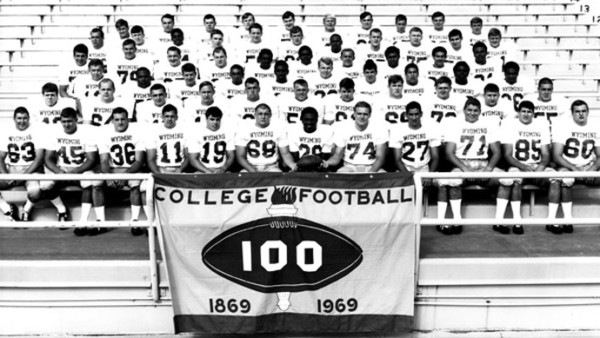







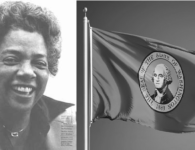
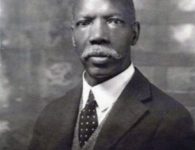
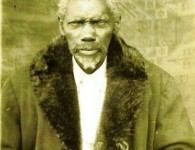
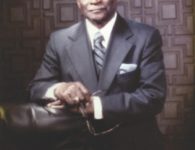
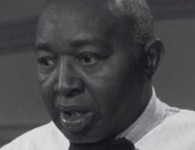

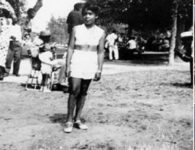





No comments